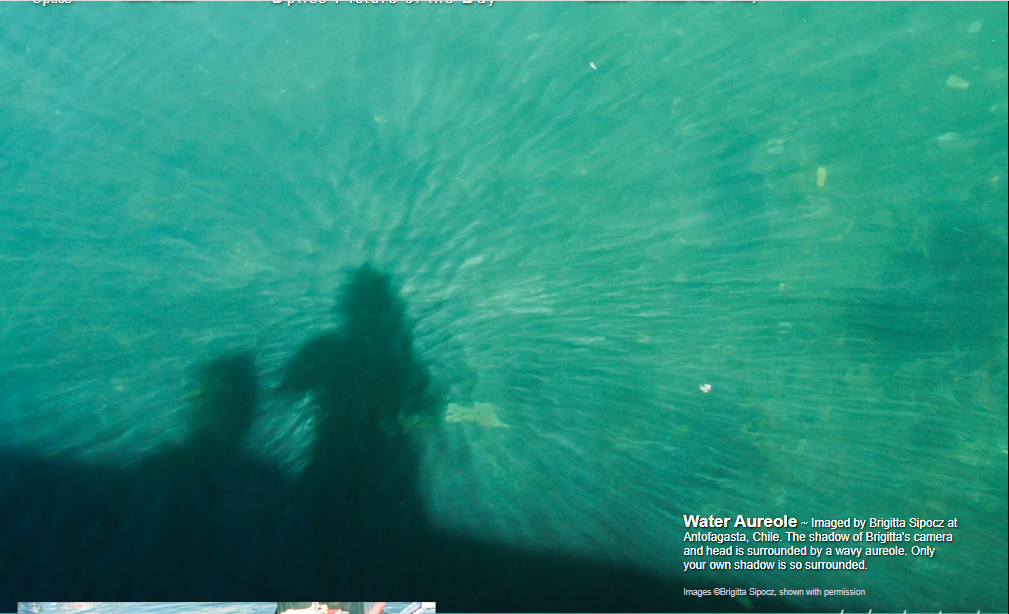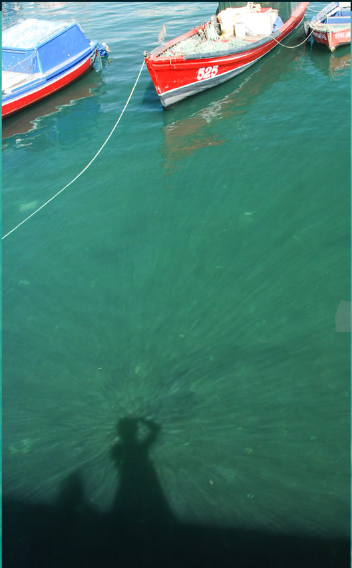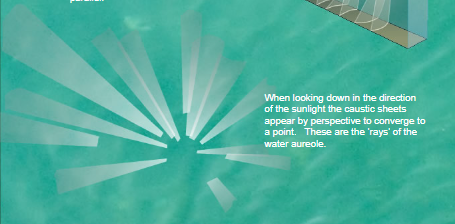XXXX - OPOD
Exploring the Enchanting Water Aureole Phenomenon
Have you ever noticed a captivating display of light surrounding your shadow when standing near a gently wavy body of water? This mesmerizing optical phenomenon is known as a water aureole. It creates a beautiful, wavy halo of light around your shadow, making it truly unique. In this article, we will delve into the intricacies of the water aureole, shedding light on its formation and the factors that contribute to its enchanting appearance.
A Closer Look at the Water Aureole
To witness a water aureole, you need to position yourself in a specific way. Find a spot where your shadow is directly opposite the sun. Ideally, the water should have a gentle wavy surface, with a depth of at least 1 meter or more. Additionally, the water should be slightly turbid, allowing the passage of sunlight rays to be visible.
The Role of Refraction and Caustics
The magic behind the water aureole lies in the phenomenon of refraction. When sunlight passes through the gentle waves on the water's surface, it undergoes refraction, causing the formation of downward-going sheets of intense light. These sheets, known as caustics, are roughly parallel to each other.
The Convergence of Caustic Sheets
When you look down towards the sunlight direction, you will observe that the caustic sheets appear to converge at a point. These converging points are referred to as the "rays" of the water aureole. It's important to note that the view of these caustic sheets is distorted due to the refraction caused by the waves. This distortion adds to the allure and uniqueness of the water aureole.
Unveiling the Beauty of Nature
The water aureole showcases nature's ability to create breathtaking visual displays through simple yet elegant mechanisms. By combining the gentle undulations of water waves with the phenomenon of refraction, nature paints an ethereal picture that captivates and mesmerizes anyone fortunate enough to witness it.
The Importance of Ideal Conditions
To witness the water aureole phenomenon in all its glory, several conditions must align perfectly. The presence of gentle waves on the water's surface is crucial, as it provides the necessary medium for refraction to occur. Additionally, the water should be slightly turbid, allowing sunlight rays to pass through and create the caustic sheets. These ideal conditions come together to create a truly magical visual spectacle.
A Reminder of Nature's Complexity
The water aureole serves as a reminder of the intricate and interconnected nature of our world. It showcases how even the simplest of phenomena can arise from the interplay of various factors, such as sunlight, water waves, and refraction. This phenomenon invites us to appreciate the beauty that emerges from the complexity of nature.
Conclusion
The water aureole is a captivating atmospheric optics phenomenon that surrounds your shadow when positioned opposite the sun on a gently wavy body of water. By understanding the principles of refraction and caustics, we can unravel the mystery behind this enchanting display of light. As we witness the convergence of caustic sheets and the distortion caused by wave-induced refraction, we gain a deeper appreciation for the intricate workings of nature. So, next time you find yourself near a suitable body of water, take a moment to marvel at the beauty of the water aureole and let it remind you of the fascinating complexities that surround us.

Water Aureole ~ Imaged by Brigitta Sipocz at Antofagasta, Chile. The shadow of Brigitta's camera and head is surrounded by a wavy aureole. Only your own shadow is so surrounded.
Images ©Brigitta Sipocz, shown with permission

Look for a water aureole where your shadow is directly opposite the sun. They need a very gentle wavy surface on water maybe 1m deep or more. The water must be slightly turbid so that sun rays passing through are visible.
The gentle waves refract sunlight to form downward going sheets of intense light. These are caustics – More about caustics here. The sheets are roughly parallel.

When looking down in the direction of the sunlight the caustic sheets appear by perspective to converge to a point. These are the ‘rays’ of the water aureole.
The view of the caustic sheets is distorted as rays reaching the eye are again refracted by the waves.Look for a water aureole where your
Note: this article has been automatically converted from the old site and may not appear as intended. You can find the original article here.
Reference Atmospheric Optics
If you use any of the definitions, information, or data presented on Atmospheric Optics, please copy the link or reference below to properly credit us as the reference source. Thank you!
-
<a href="https://atoptics.co.uk/blog/xxxx-opod-5/">XXXX - OPOD</a>
-
"XXXX - OPOD". Atmospheric Optics. Accessed on November 26, 2024. https://atoptics.co.uk/blog/xxxx-opod-5/.
-
"XXXX - OPOD". Atmospheric Optics, https://atoptics.co.uk/blog/xxxx-opod-5/. Accessed 26 November, 2024
-
XXXX - OPOD. Atmospheric Optics. Retrieved from https://atoptics.co.uk/blog/xxxx-opod-5/.